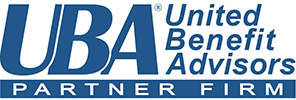 The U.S. Presidential race win by Donald Trump will impact labor, employment, and HR professionals in the key issues of immigration, paid leave, tax reform, and health care.
The U.S. Presidential race win by Donald Trump will impact labor, employment, and HR professionals in the key issues of immigration, paid leave, tax reform, and health care.
Significant Shift in Immigration Policy
Trump has been vocal about his stance on immigration in regard to deportation and illegal immigration. He also seeks to strengthen U.S. jobs, wages, and security through the nationwide use of E-Verify. Trump plans to work with Congress to strengthen and expand the use of E-Verify as currently less than half the states require employers to use E-Verify; however, more than 16.4 million cases were run through E-Verify in fiscal year 2016 by employers in every industry, state, and U.S. territory. E-Verify ensures a legal workforce, protects jobs for authorized workers, deters document and identity fraud, and works seamlessly with Form I-9. Employers may also look to the changes in the Form I-9 effective January 21, 2017 designed to make the form more user-friendly and alleviate mistakes, although this was established prior to Trump’s presidency.
Paid Leave for New Mothers
Although the specifics are unclear right now, Trump has proposed six weeks of paid maternity leave to new mothers. These payments would come from recapturing fraud and improper payments in the U.S. unemployment insurance system. Trump has also discussed allowing parents to enroll in tax-free dependent care savings accounts for their children (read in-depth analysis of paid family leave from our own in-house expert Laura Kerekes). According to the National Partnership for Women and Families, employers can expect paid leave to improve worker retention, reduce turnover costs with increased worker productivity, and increase employee loyalty.
Tax Reform
Trump has advocated for significant tax cuts “across the board” by increasing the standard deduction to $30,000 for joint filers (from $12,600), and simplifying the tax code. Trump plans to collapse the seven tax brackets to three with low-income Americans at an income tax rate of 0 percent. Trump’s tax plan also seeks to lower the business tax rate from 35 percent to 15 percent, and eliminate the corporate alternative minimum tax. Proponents of lowering business taxes assert that it creates jobs in the United States rather than overseas, encourages investment in our infrastructure, and because the United States has the highest corporate income tax rates, businesses are at a significant disadvantage. Trump intends to apply this lower rate to all business, both small and large. Additionally, according to Trump’s tax plan, businesses that pay a portion of an employee’s childcare expenses would be permitted to exclude those contributions from income. Employees who are recipients of direct employer subsidies would not be able to exclude those costs from the individual income tax and the costs of direct subsidies to employees could not be used as a cost eligible for the credit.
Repeal of the Affordable Care Act
The Affordable Care Act will be challenged under Trump’s administration. Trump seeks to remove healthcare exchanges and replace them with tax-free health savings accounts for people with high-deductible insurance plans. Trump has also advocated state-based high-risk pools for people with medical conditions that make it hard to get coverage on their own. He also seeks to allow companies to sell insurance across state lines to boost competition and drive down prices.
What’s Next for Employers
Interestingly, the largest impact of a Trump presidency may not be from his stance on these issues but may be seen when it comes time to naming the next U.S. Supreme Court Justices as he will likely appoint four justices during his term in office. Experts predict four because the average age of retirement for a Supreme Court justice has been approximately 78.7 years old, and currently three of the eight justices range in age from 78 – 83. The fourth open seat remains unoccupied since Justice Antonin Scalia’s death in February.
Understandably, there are opposing views to these presented issues, and neither candidate provided many details about how their plans for these issues would be financed or implemented. ThinkHR will follow the changes in labor and employment laws and will provide information and tools to help employers make sense of the changes that impact American businesses.
Originally published by ThinkHR – Read More

